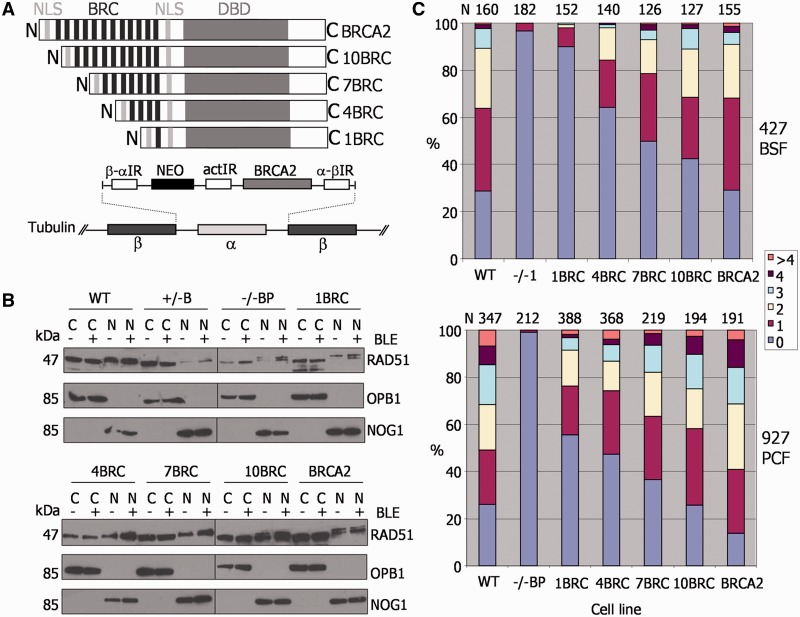Figure 2.
The BRC repeat number of T. brucei BRCA2 affects the efficiency of RAD51 subnuclear foci formation. (A) A diagrammatic illustration of the strategy for expression of BRCA2 variants with differing numbers of BRC repeats. BRCA2 variant ORFs were targeted to the tubulin array for expression in brca2−/− cells, using flanking β-α and α-β tubulin intergenic regions (IR) for homologous integration. Transformants were selected by G418 resistance using a neomycin phosphotransferase ORF (NEO), which was upstream of the BRCA2 variant ORF; actin IR sequence between the NEO and BRCA2 ORFs was for mRNA processing. The BRCA2 variants differed only in the number of BRC repeats they encode (black bars): 1, 4, 7, 10 or 12, indicated by 1BRC, 4BRC, 7BRC, 10BRC or BRCA2, respectively. Other conserved domains are indicated: DBD and two putative NLS. (B) Aqueous fractionation was performed to generate protein fractions enriched in soluble cytoplasmic (C) and nuclear proteins (N) from WT TREU927, BRCA2+/−, brca2−/− and BRCA2 BRC variant expresser cells; ‘hyphen’ indicates fractions prepared without phleomycin (BLE) treatment, and ‘plus’ indicates fractions prepared after phleomycin treatment (1 μg ml−1 for 18 h). Fractions were separated by SDS–PAGE and western blotted before being sequentially probed with anti-RAD51, anti-OPB1 and anti-NOG1 antiserum; protein sizes are indicated (kDa). (C) For PCF TREU927 and BSF Lister427 T. brucei, WT, brca2−/− mutants and BRC variant expressers were treated with 1 μg ml−1 phleomycin for 18 h, and the number of cells with a specific number of subnuclear RAD51 foci (0, 1, 2, 3, 4, >4) counted; graphs represent the numbers of foci-containing cells as a percentage of the total number of cells counted (N).

